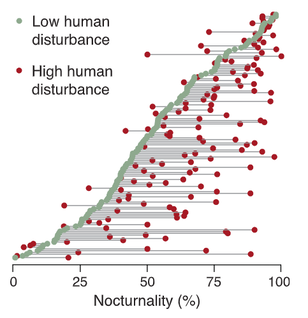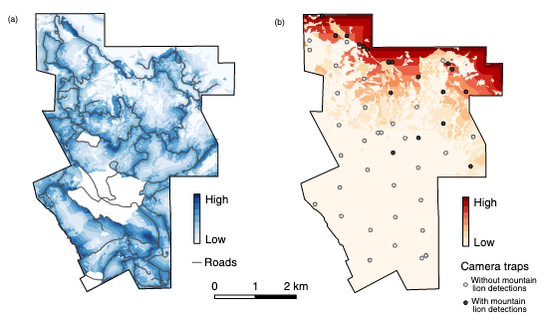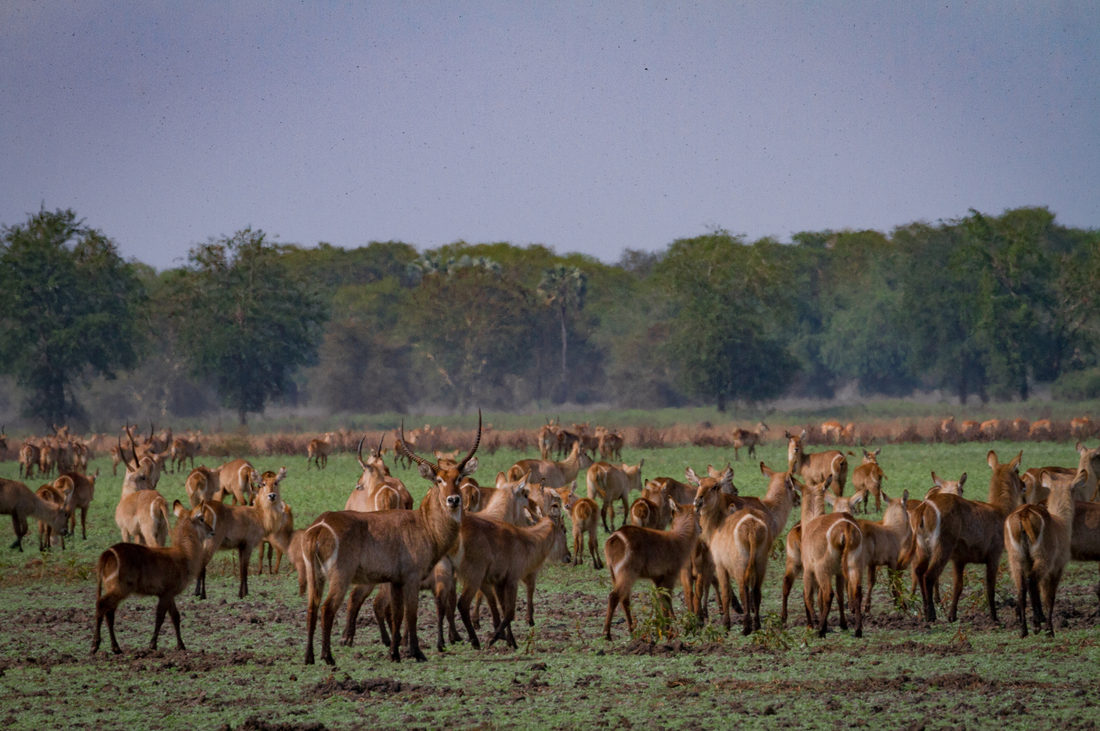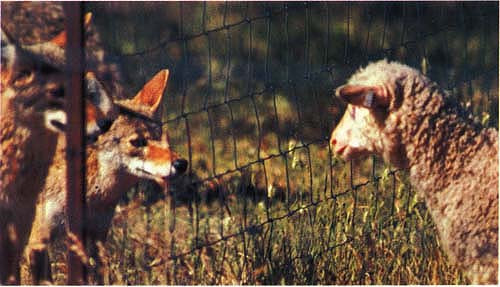|
Human disturbance makes animals more nocturnal (Gaynor et al. 2018 Science).
|
Behavioral responses of animals to human disturbancePeople play an important top-down role in ecosystems as lethal and non-lethal predators, with effects on animal behavior and community interactions. Humans may drive patterns of wildlife behavior and distribution through their interactions with animals in a manner predicted by the “ecology of fear.” Meanwhile, human disturbance also changes patterns of habitat and food availability, and these bottom-up influences further shape risk-benefit trade-offs for wild animals. By applying our knowledge of natural ecosystems to novel human-modified systems, we may better understand how animals respond to humans at multiple spatial, temporal, and ecological scales and work towards solutions for human-wildlife coexistence. Our research integrates data from multiple sources, including camera traps and GPS telemetry data, to explore the influence of human activity and infrastructure on patterns of animal activity at regional and global scales.
|
|
Waterbuck in Gorongosa National Park (Gaynor et al. 2021 Anim Cons). Photo by Jen Guyton.
|
Wildlife restoration in novel landscapesWhile animal populations are declining globally, successful conservation efforts have led to the recovery of large mammals in many places around the world, including our field sites in Gorongosa National Park, Mozambique, and in North America. In most cases, these animals are returning to ecosystems that look very different from those they once inhabited, given rapid human population growth, land conversion, and global climate change. We explore the ecological dynamics of recovering large mammal populations in human-altered landscapes to inform multi-species conservation strategies.
|
|
Recreation in US National Parks is increasing, particularly in the last decade.
|
Balancing recreation & conservation in protected areasMany protected areas around the world are tasked with the joint goals of conserving biodiversity and providing recreation opportunities. In recent years, the rapid growth of visitation to many protected areas has raised concerns about potential negative impacts on wildlife and on equitable and enjoyable visitor experiences. Our interdisciplinary work leverages multiple datasets from the United States to explore the effect of recreation on animal movement, and to better understand patterns of access to recreation opportunities.
|
|
Coyote and sheep meet at the Hopland Research and Extension Center, California.
|
Socio-ecological dynamics of coexistenceIn addition to understanding the consequences of human-wildlife interactions from the perspective of the animal, we explore what these interactions mean for the people involved. With colleagues, we have explored linkages between war and biodiversity outcomes, the social and ecological consequences of hunting-induced defaunation in the tropics, reintroductions of large carnivores, and socio-ecological dynamics of carnivore-livestock conflict.
|
Open and inclusive scienceWith collaborators across ecology and other disciplines, we study and advocate for practices that promote a more inclusive environment within our scientific community. Our work in this space has examined practices to foster belonging in data science research, efforts to revise scientific language to reduce harm, and strategies for promoting data and code sharing to reduce barriers to access and knowledge sharing. We are open to continued learning in and outside of our lab about how we can conduct research more inclusively, to promote equity and justice.
|
Addressing today's complex conservation challenges relies on collaboration across natural and social sciences, as well as communication between academics, managers, policymakers, and all stakeholders. We are always open to new collaborations, so please reach out!






